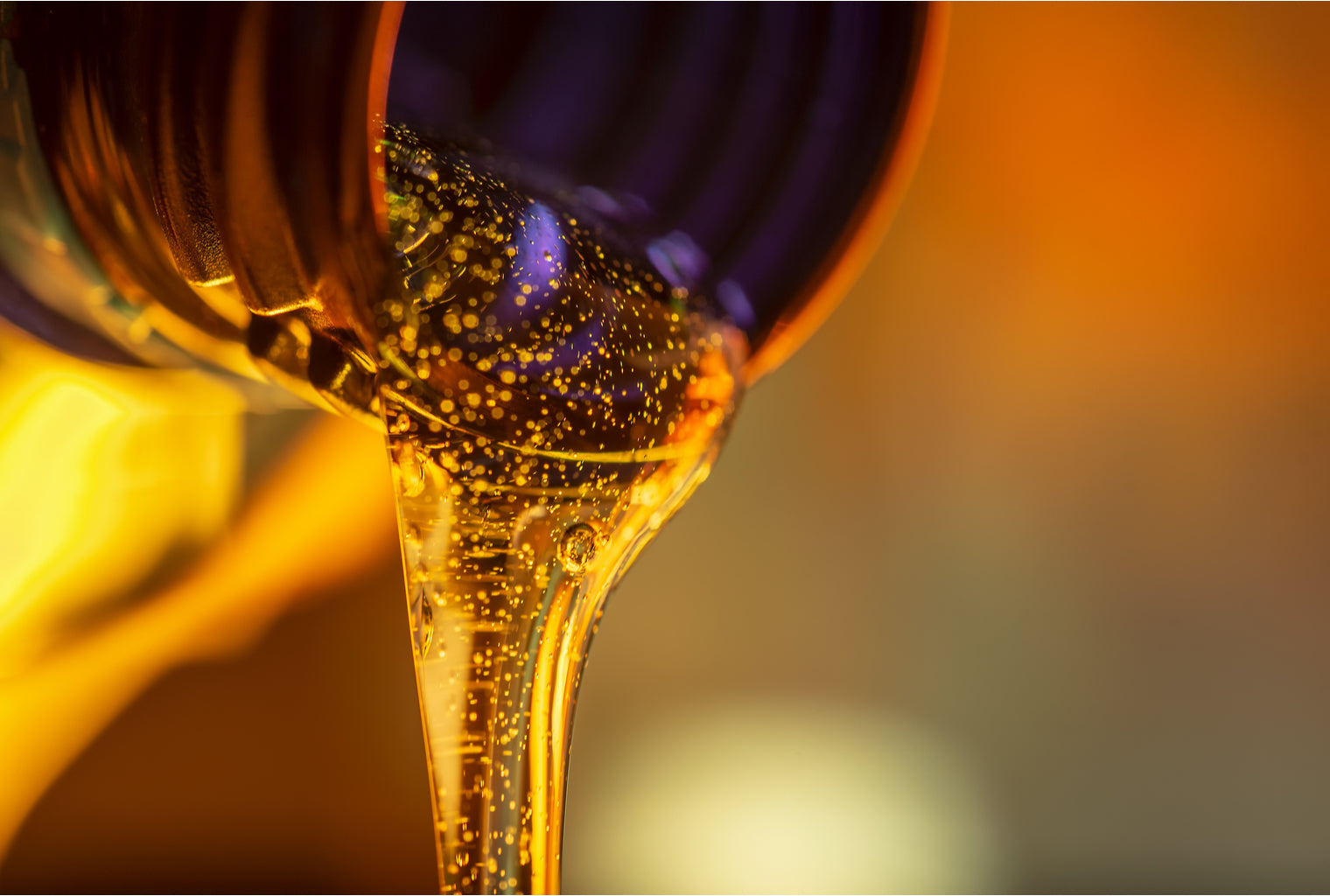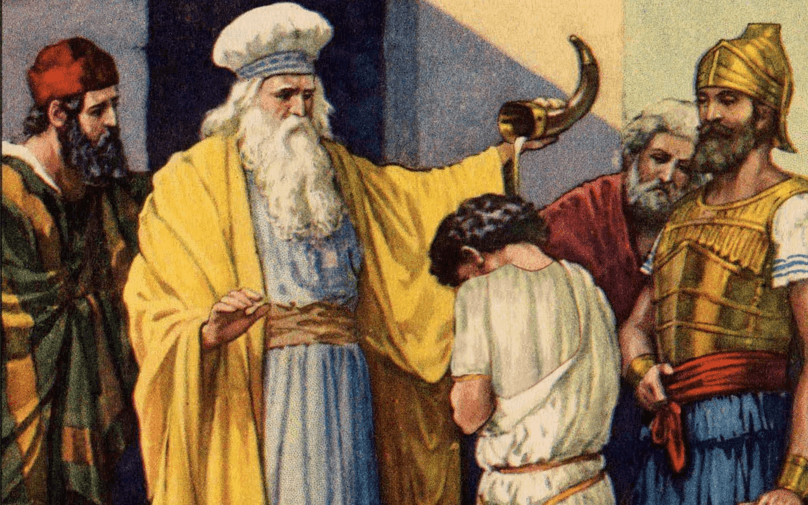
What is Anointing Oil used for?
The holy anointing oil (Hebrew: שמן המשחה, shemen ha-mishchah, "oil of anointing") formed an integral part of the ordination of the priesthood and the High Priest as well as in the consecration of the articles of the Tabernacle (Exodus 30:26)[ and subsequent temples in Jerusalem. The primary purpose of anointing with the holy anointing oil was to sanctify, to set the anointed person or object apart as qodesh, or "holy" (Exodus 30:29).
Originally, the oil was used exclusively for the priests and the Tabernacle articles, but its use was later extended to include kings (1 Samuel 10:1). It was forbidden to be used on an outsider (Exodus 30:33) or to be used on the body of any common person (Exodus 30:32a) and the Israelites were forbidden to duplicate any like it for themselves (Exodus 30:32b).
Some segments of Christianity have continued the practice of using holy anointing oil as a devotional practice, as well as in various liturgies.
A number of religious groups have traditions of continuity of the holy anointing oil, with part of the original oil prepared by Moses remaining to this day. Among these groups are rabbinical Judaism, the Armenian Church, the Assyrian Church of the East, the Coptic Church, and the Saint Thomas Nazrani churches.
Hebrew Bible
According to Exodus 30:22–25, holy anointing oil is made from:
- Pure myrrh (מר דרור, mar deror) 500 shekels (about 6 kg (13 lb))
- Sweet cinnamon (קינמון בשם, kinnemon besem) 250 shekels (about 3 kg (6.6 lb))
- "Fragrant cane" (קְנֵה-בֹשֶׂם, qaneh-bosem, sometimes translated as calamus) 250 shekels (about 3 kg (6.6 lb))
- Cassia (קדה, kiddah) 500 shekels (about 6 kg (13 lb))
- Olive oil (שמן זית, shemen zayit) one hin (about 6 L (1.3 imp gal; 1.6 US gal), or 5.35 kg (11.8 lb))
Etymology
Messiah (in Greek Christos) means "the anointed one" and refers to anyone who has been anointed. A person thus anointed might be a king, a priest, or a prophet.
In the ancient Near East
Middle Eastern cultures have a variety of customs. In Israel, anointing with special oil was either a priestly or a kingly privilege. Whenever a prophet was anointed, it was because he was first a priest. A non-king being anointed, such as Elijah's anointing of Hazael and Jehu, meant Hazael would become king of Aram (Syria) and Jehu would become king of Israel. Extra-biblical sources show that it was common to anoint kings in many ancient Near Eastern monarchies. Therefore, in Israel, anointing was not only a sacred act but also a socio-political one.
The Hebrew Bible describes bad smells as signs of disease, decay, rotting processes and death (Exodus 7:18), while pleasant aromas indicate places that were biologically clean and conducive to habitation and/or food production and harvesting activities. Spices and oils were chosen that would assist man in orienting himself and creating a feeling of security as well as a sense of elevation over the physical world of decay. The sense of smell was also highly valued by deities. In Deuteronomy 4:28 and Psalm 115:5-6, the sense of smell is mentioned in connection with the polemic against idols. The Hebrew Bible describes God's enjoyment of inhaling the "soothing odor" (reah hannihoah) of offerings (Genesis 8:21; the phrase appears elsewhere as well).
In ancient Israel, there was no oil or fat more symbolic than olive oil. Among many other uses, it was used as an emollient, a fuel for lighting lamps, and for nutrition. The Israelites chose scented olive oil to be their holy anointing oil.
Identification of kaneh bosem
Four ingredients of anointing oil have been agreed upon, but the identity of the fifth, "kaneh bosem", has been debated. It was an aromatic cane or grass imported through the spice routes from a distant land, and a related plant grows naturally in Israel. The "kaneh bosem" is thought to be several different plants.
Acorus calamus
The majority of lexicographers, botanists, and biblical commentators translate keneh bosem as "cane balsam. The Targum Onkelos renders kaneh bosem in Aramaic as q'nei busma. Ancient translations identify this as the plant known variously as sweet cane or sweet flag (nl. the Septuagint, the Rambam on Kerithoth 1:1, Saadia Gaon and Jonah ibn Janah). This plant is known to botanists as Acorus calamus. According to Aryeh Kaplan in The Living Torah, "In ancient times, a species similar to this grew in the Holy Land, in the Hula region (Theophrastus, History of Plants 9:7)."
Cymbopogon
Maimonides, in contrast, indicates that it was the Indian plant, rosha grass (Cymbopogon martinii), which resembles red straw. Many standard reference works on Bible plants by Michael Zohary (University of Jerusalem, Cambridge, 1985), James A. Duke (2010), and Hans Arne Jensen (Danish 2004, English translation 2012) concur with this conclusion, arguing that the plant was a variety of Cymbopogon. James A. Duke, quoting Zohary, notes that it is "hopeless to speculate" about the exact species, but that Cymbopogon citratus (Indian lemon-grass) and Cymbopogon schoenanthus are also possibilities. According to Kaplan, it is Cymbopogon martinii or palmarosa.
Cannabis, and others
Other possible identifications have been made as well. Sula Benet in Early Diffusion and Folk Uses of Hemp (1967), identified it as cannabis ] Rabbi Aryeh Kaplan notes that "On the basis of cognate pronunciation and Septuagint readings, some identify Keneh bosem with the English and Greek cannabis, the hemp plant. There are, however, some authorities who identify the 'sweet cane' with cinnamon bark (Radak, Sherashim). Some say that kinman is the wood, and keneh bosem is the bark (Abarbanel)." Benet in contrast argued that equating Keneh Bosem with sweet cane could be traced to a mistranslation in the Septuagint, which mistook Keneh Bosem, later referred to as "cannabos" in the Talmud, as "kalabos", a common Egyptian marsh cane plant.
In 2020, new research confirmed ritual cannabis was used in Israel as early as 1000 BC.
In Rabbinic Judaism
The Talmud claims that the original anointing oil prepared by Moses miraculously remained intact and was used by future generations without replacement, including when the Third Temple is rebuilt. Vendyl Jones claimed that such a small quantity of oil (around a gallon) would not last long (it is said that one juglet of oil lasted over 800 years). In an attempt to explain this discrepancy, it is claimed that either the container of holy anointing oil was miraculously multiplied (similar to Elijah's multiplication of oil for the widow of Zarephath or the Hanukkah oil miracle) or new oil was added to the old thus preserving the original oil for eternity.
Jewish tradition emphasizes continuity in many rituals. Early Jewish rabbis stressed the importance of the succession of semikhah[45], and one Jewish tradition teaches that the ashes of the last red heifer sacrificed are always mixed with those of the new red heifer sacrificed.
In Christianity
Further information: Anointing of the Sick and Chrism
Anointing oil is used in some Christian communities. A passage in the New Testament says,
James 5:14-16
King James Version
14 Is any sick among you? Let him call for the elders of the church; and let them pray over him, anointing him with oil in the name of the Lord:
15 And the prayer of faith shall save the sick, and the Lord shall raise him up; and if he have committed sins, they shall be forgiven him.
16 Confess your faults one to another, and pray one for another, that ye may be healed. The effectual fervent prayer of a righteous man availeth much.
During the Catholic era, the apostolic succession, the continuity of laying on of hands for ordination, was emphasized.
In the Armenian Church
The holy anointing oil used by the Armenian Church is called muron (muron means myrrh in Armenian). In the church, oil is revered for its continuity. Tradition has it that a portion of the holy anointing oil from Exodus 30, which Moses and Aaron blessed, remained in Jesus' time. Jesus Christ blessed this oil and then gave some to Thaddeus. Thaddeusddeus took the holy oil to Armenia and anointed King Abkar with it in order to cure him of a terrible skin condition. Under an evergreen tree in Daron, Saint Thaddeus is said to have buried a bottle of holy anointing oil. Gregory the Illuminator discovered the hidden treasure and mixed it with the muron he had sanctified. "To this day, when a new batch of muron is prepared and blessed, a few drops of the old one are added, so that the Armenian muron always includes a small amount of the original oil blessed by Moses, Jesus Christ, and Gregory the Illuminator."
The holy muron is made with olive oil and forty-eight aromas and flowers. During the blessing ceremony, the remainder of the previously blessed holy oil is poured into the newly prepared oil, and the blessing is passed down from generation to generation. The same procedure has been followed for nearly 1700 years. In only very special occasions, such as the enthroning of royalty. The oil was later used for anointing ordained clergy and healing the sick with extreme unction.
In the Assyrian Church of the East
According to the Assyrian Church, the holy anointing oil "was given to us by the holy fathers Mar Addai, Mar Mari, and Mar Tuma." The holy anointing oil of the Assyrian Church is also known as the Oil of the Holy Horn, the Oil of Qarna, or the Oil of Unction. Holy oil is a tradition originating from the apostles, believed to be passed down in the Church through succession from the oil consecrated by the apostles themselves. The original oil that the disciples blessed bran out, so more oil was added. Even today, the Assyrian Church believes that new oil is being added as the oil level drops. The succession of holy oils is considered to be a continuation of the blessings placed upon the oil at its inception.
Holy Leaven and Oil of Unction are both known as "leaven" even though there is no actual leavening agent, so the nomenclature Holy Leaven is somewhat misleading. Yohanan bar Abgareh referred to it in 905 and Shlemon d-Basra in the 13th century. Yohanan bar Zo'bee integrated the Holy Oil of Unction with baptism and other rites during the 14th century. In the 15th century, Isaac Eshbadhnaya wrote the Scholion, a commentary on specific theological topics. John the Baptist gave John the Evangelist a baptismal vessel filled with water from Christ's baptism. This was collected by John the Baptist from water that dripped from Christ after his baptism in the Jordan River. Jesus gave each disciple a loaf at the Last Supper. However, the Scholion informs us that he gave John two loaves, instructing him to eat only one and keep the other. John collected the water from the Lord's side and the blood from the Last Supper loaf during the crucifixion. Upon the descent of the Holy Spirit on Pentecost, the disciples took the vessel and mixed it with oil and each took a horn from it. They ground up the loaf and added flour and salt to it. Each took a portion of the holy oil and holy bread that were distributed by missionaries in every land.
According to the Assyrian Church, there are two types of holy oils: ordinary olive oil, blessed or not, and the oil of the Holy Horn, which is believed to have been passed down from the apostles. By adding oil blessed by a bishop on Maundy Thursday, the Holy Horn is constantly renewed. The regular oil can be anointed by almost anyone according to tradition, but the oil of the Holy Horn is reserved for ordinations and sanctifications.
In the Coptic Church
"Myron" is the name given to the holy oil used for anointing by the Coptic Church. Scholars believe the laying on of hands was a rite of the apostles and their successors, the bishops. As the number of mission fields grew, so did the number of Christian believers and converts. As the apostles were unable to visit all the faithful in all the countries and cities, anointing with holy myron was performed in place of the laying on of hands as an alternative to the indwelling of the Holy Spirit.
When they buried Jesus, the apostles made the first myron to preserve the fragrant oils. Spices brought by the women who had come to anoint Christ were added, but they discovered he had been resurrected. In the upper room of Zion, they melted all these spices in pure olive oil and made holy anointing oil. By incorporating the original oil with the new oil, their successors, the bishops, were instructed to make the myron whenever it is nearly used up.ic Church uses iThe Coptic Church uses it for ordinations, for sanctifying baptismal water, and for consecrations of churches, altars,
St. Mark is said to have taken with him some of the holy myron oil made by the apostles during his journey to Alexandria. He is said to have used it in the sacrament of Chrism, as did the patriarchs who succeeded him. This continued until the era of Athanasius the Apostolic, the 20th patriarch, who then decided to rebuild the myron in Alexandria. Hence, it is reported, he prepared all of the needed perfumes and spices, with pure olive oil, from which God ordered Moses to make the holy anointing oil as specified in the recipe in the thirtieth chapter of the book of Exodus. Then the sanctification of the holy myron was fulfilled in Alexandria, and Athanasius was entrusted with the holy oil, which contained spices which touched Jesus’s body while it was in the tomb, as well as the original oil which had been prepared by the apostles and brought to Egypt by St. Mark. He distributed the oil to the churches abroad: to the See of Rome, Antioch and Constantinople, together with a document of its authenticity, and all of the patriarchs are said to have rejoiced in receiving it.
Among the fathers and scholars of the Coptic Church, St. Justin Martyr, Tertullian, St. Hippolytus, Origen, St. Ambrose, and St. Cyril of Jerusalem discussed the holy myron and how it was used in traditional anointings. In his Apostolic Tradition, Saint Hippolytus describes the holy oil as being prepared according to ancient custom; Saint Origen describes the holy oil as being made according to church tradition; and Saint Cyril of Jerusalem elaborates further on the grace of the Holy Spirit in the holy myron: "this oil is not just any oil; after the epiclesis of the Spirit, it becomes a charism of Christ and a power of the Holy Spirit."."
Several early Coptic fathers and scholars mention the use of the holy myron, including Abu'l-Barakat Ibn Kabar, a 14th-century priest and scholar who wrote Misbah az-Zulmah fi idah al-khidmah (The Lamp of Darkness in Clarifying the Service). The holy apostles of Upper Zion, the first church where the Holy Spirit fell in the upper room, added pure olive oil to the spices used to anoint the body of Jesus when he was buried, and prayed over them.
As a result, it was distributed among all the apostles so that wherever they preached, the converts would be sealed with it. In order to keep the first holy myron with all future batches, the old holy myron was added to the new every time a new batch was made.
According to available resources, the holy myron has been made 34 times in the Church of Egypt.
Among the Saint Thomas Christians and Nasranis
The tradition holds that St. Thomas laid the foundation for Christianity in India. It is reported that Jewish communities already present in India enticed Thomas to make his missionary journey there. It is said that he brought holy anointing oil with him and that the St. Thomas Christians still have this oil to this day.
Patriarch Ya`qub, of the Syrian Malabar Nasrani Church, is remembered for his celebration of the liturgy and his humble encouragement to accept the simple way of life. After he consecrated sacred myron in the Mor Gabriel monastery in 1964, holy myron flowed from the glass container the following day. Many people were said to have been healed by it.
Throughout the Bible, the Holy Spirit is represented by oils, from olive oil to essential anointing oils. What role do oils play in your life today? Do you use oil as a light source? Are you anointing with oil in spiritual practices? Share your thoughts below.


Leave a comment
This site is protected by hCaptcha and the hCaptcha Privacy Policy and Terms of Service apply.